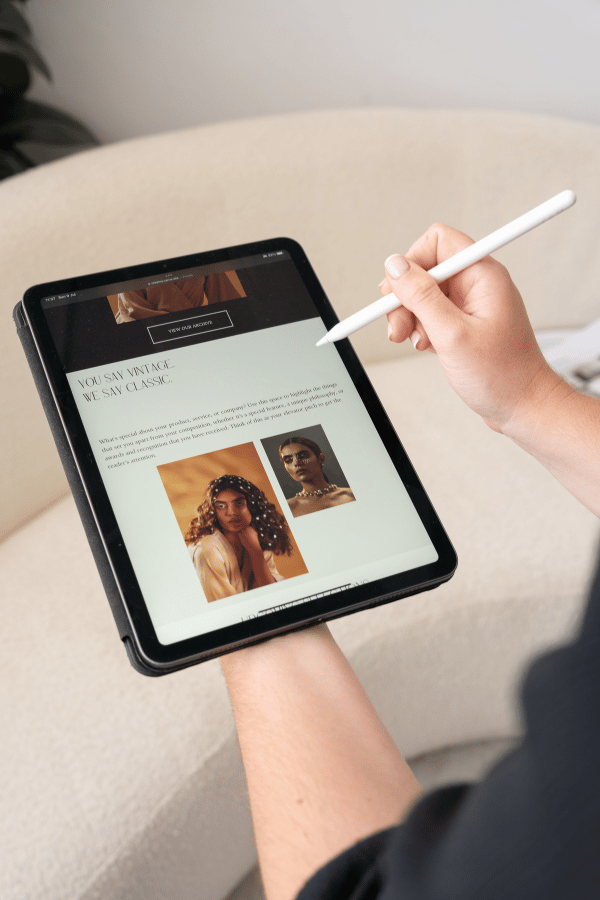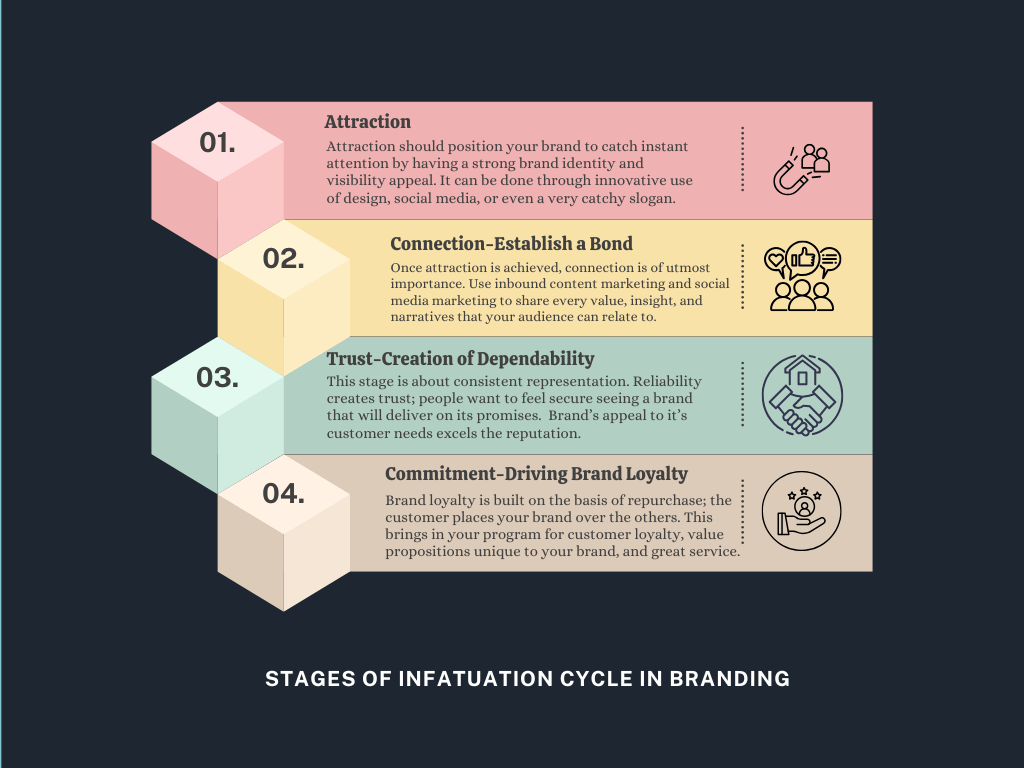Human Branding: The Key to Nourish Brand-Customer Relationship
Shataghnee Chanda
November 01, 2024. 4 minute Read
How many times have you encountered a social media post that resonates with you deeply while you are scrolling through the feed? Quite a lot, right?
Almost prophetic, in a sense; where it understands your thoughts, emotions, and values. This personal connection is exactly what the most successful brands of this human branding era strive for.
Studies show that over 86% of consumers prefer brands that possess a personality with which they can relate, and it is no coincidence that brands with strong brand personalities often outperform the others when it comes to brand loyalty.
But who are they? Are these human brands? And how can your brand achieve that?
As we dig deeper, you will have a clearer understanding about the realms of human branding and the infatuation cycle-these concepts bring the brand closer to the customer by establishing real emotional connections.
"
In this article, we will guide you on making your brand relatable; take you through each stage of the path to your customer; and reveal how The One Liner can help figure out all of this.
What is Human Branding?
Human branding is an elevating process that shapes a brand to be more like a person than an impersonal entity that connects with customers. This powerful approach offers insight into a brand’s character, values, and narrative, helping consumers advance from mere connectivity to trust and loyalty. By directing salient human qualities—empathy, authenticity, and strong relatability—human branding encourages the audience into perceiving the brand as a trusted friend rather than a mere organization.
One can achieve this manipulation by creating:
- a branding voice,
- authentic brand storytelling,
- quality control,
- customer experience and
- customer empathy in engagement.
When consumers feel that a brand understands and cares for them, they most likely will patronize such a brand repeatedly and speak highly of it.
How to Transform Your Brand Into a Human Brand?
Human branding is the design of a brand that feels like a person rather than a corporation. An emotionally meaningful brand identity creates experiences that become unforgettable and lasting. Here’s how to help your brand feel more human:
1. Define Your Brand Personality
Make your brand personality with some characteristics that your audience will easily recognize and connect. Do you have a quirky, reliable, or bold personality? Once you decide on these traits, you will be able to develop a consistent and relatable brand voice across all platforms.
2. Develop a Unique Brand Voice
Your brand voice represents how your brand “speaks” to your audience. A developed voice holds all your communications in place: every social media post, newsletter, advertisement, you name it. For example, Nike speaks encouragingly, while Dove speaks compassionately and inclusively.
3. Use Brand Storytelling to Build Emotional Connections
One strong way to foster emotional connections is through brand storytelling. Share your journey, vision, and challenges. Consumers are interested in knowing the backstory and are likely to grow an emotional connection if they are familiar with your business values. Storytelling grabs attention, and it makes your brand more human.


4. Commit to Customer Empathy and Experience
Human brands place customer empathy at the core of their operations. Listening to feedback, anticipating needs, and making customers feel valued are the ethos of a human-centered brand. Successful user experience includes doses of empathy at each interaction, elevating the level of trust and relatability.
5. Capitalize on Social Media to Interact Directly
This is where human branding comes alive. Interact with your followers genuinely, respond to comments, and create polls and Q&A sessions. It’s really the kind of interaction that makes a customer feel it’s been a personal and appreciated experience—and that really strengthens your human connection.
However!
Remember! Learning all about human branding would be incomplete as long as there is no clearer understanding about the infatuation cycle in human branding. Because the Infatuation cycle often mirrors the phases of human relationships, in order to be able to build that strong loyalty and devotion. Just as people go through stages of attraction, connection, trust, and commitment in romantic relationships with other people, so do the customers in their journey with a brand.
By understanding how such a cycle works, brands can proactively shape experiences that not only welcome but also nourish the level of engagement of customers, fostering the highest levels of loyalty and advocacy.
So why wait?
Learn the exciting science behind brand loyalty through the stages of customer infatuation!!!
The Science of Brand Loyalty!!
An infatuation cycle describes the consumer journey by breaking it down into a set of stages that is analogous to how someone would fall in love. The brand, like a relationship, gains trust and loyalty by leading the consumer to the commitment-in-vibe process.
Stage 1: Attraction
Attraction is the first stage of making an impression. It should position your brand to catch instant attention by having a strong brand identity and visibility appeal. It can be done through innovative use of design, social media, or even a very catchy slogan. There must be a focus on raising familiarity and visibility.
Interesting Fact: Brands have just 7 seconds to convey a good first impression. In this stage, select visuals and messages that capture instant attention.
Stage 2: Connection: Establish a Bond
Once attraction is achieved, connection is of utmost importance. Use inbound content marketing and social media marketing to share every value, insight, and narratives that your audience can relate to. Talk to them in a personalized way that makes them realize you have grasped their journey and could help them.

Stage 3: Trust: Creation of Dependability
This stage is about consistent representation. Reliability creates trust; people want to feel secure seeing a brand that will deliver on its promises. Through the combination of brand messages that not only appeal to their needs but also provides high-quality products/services, brand reputation and brand equity excels.
Stage 4: Commitment: Driving Brand Loyalty
Brand loyalty is built on the basis of repurchase; the customer repeats his choice and places your brand over the others. This brings in your program for customer loyalty, value propositions unique to your brand, and great service. Collectively, this is driving in your long-term loyalty wherein the customers feel they are a part of the community aligned with your brand.
Interesting Fact: Studies say that a loyal customer ends up spending 67% more than the new ones, making this stage of tremendous importance to growth and sustainability.
How to build Human Brands through Infatuation?
In order to truly capture and further engage various emotions at every single infatuation stage, brands will:
1. Personalize Your Approach at Every Touchpoint
Personalization is really an intrinsic feature of the back end of digital marketing and social media advertising. Use data to deliver personalized recommendations, product suggestions, and customized content. Tailored email marketing, targeted social media advertisements are some personalized strategies toward consumer engagement.
2. Identify Moments of Emotional Connection
In short, think of those little moments that bring a shower of joy or relief to your customer. It could involve answering common inquiries and providing helpful advice to creating something shareable, like a commercial or a viral video. This is where brand storytelling steps in: It allows the brand to present itself and relate to its customers in a relevant way.
3. Use Data to Improve Customer Experience
By collecting insights into customer wants through data and feedback, brands can polish their UX and UI. For the sake of trust and comfort with your brand, an investment in intuitive and user-friendly design pays off for years to come.
4. Be Transparent and Authentic
Authenticity is becoming even more central to instilling brand loyalty. Open up about how you operate and your values, and even your problems-it’s one of the ways to strengthen the human side of your brand. Through honesty and clarity, communication builds the brand’s reputation and nurtures relatability.
5. Continuously Innovate and Stay Relevant
When brands continuously evolve but remain loyal to their values, are the ones who stay at top. Stay clear about your basics, however-don’t experiment with gimmicks. Other new weapons in your marketing artillery include influencer marketing, email marketing, and even search engine optimization (SEO).
Examples of Successful Human Branding
1. NIKE
With powerful, daring messaging, alongside an advocacy for inclusivity and empowerment, Nike has built a powerful brand personality that is real and deeply relatable. The ‘Just Do It’ campaign is not a mere advertisement selling athletic wear, but rather a program promoting self-believe, perseverance, and willpower.
By associating itself with athletes and public figures, Nike has established a circle of devoted followers who see it as a genuine companion in their personal and athletic journeys.
2. DOVE
Dove’s campaigns such as “Real Beauty” bring progressive changes in beauty standards while embracing diversity. By showing real people with unique stories, Dove has created a brand identity with acceptance and self-love.
It not only earned Dove loyalty among customers but also a sense of community among consumers who feel seen and valued.
3. APPLE
Apple is known for innovation, simplicity, and connectedness. With sleek designs, an easy-to-use interface, and customer-centric product launches, Apple establishes itself as a brand that answers the need and has the foresight to anticipate it.
Such a human-centered approach created a base of customers who feel very loyal about Apple values and look forward to each new release.
Final Thoughts
In a nutshell!
The human branding and infatuation cycle brings the brands closer to consumers, thus building long-term relationships predicated on trust, loyalty, and common values. When you understand the stages of attraction, connection, trust, and commitment of your customer, your brand becomes something cherished, real, and indispensable to them.
Are you excited about creating a brand that would serve like the trusted friend in need? The One Liner would delineate the course, with everything you need to build on the ground. From enticing a valuable brand personality to crafting down an interesting consumer experience. By covering these strategies, your brand will charm, enthrall, and keep customers coming back.



